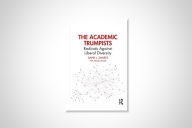You have /5 articles left.
Sign up for a free account or log in.
This past weekend, The New York Times ran a story about the challenges that summer camps are having in recruiting and retaining counselors.
It seems that some sleepaway summer camps are so short-staffed that they are being forced to limit the number of summer sessions and, in extreme cases, even send kids home.
As someone who spent three formative summers as a sleepaway camp counselor in my teens and early 20s, I find it intriguing that some camps can’t find enough counselors to operate.
The Times story lists a few reasons why camps are experiencing such a severe labor shortage. Foreign young adults, who in typical summers would make up a quarter to a third of all counselors, now face significant pandemic-related travel restrictions. At the same time, jobs in the service sector have been offering significantly higher hourly wages to attract workers. Summer camps have trouble competing with $15 an hour from fast-food restaurants and retail stores.
What does any of this have to do with higher ed?
Let me ask you this. Would you say that the campus department, unit, center or organization you work in has enough people to do the work?
My strong guess is that you’d answer no.
Understaffing, as best as I can tell, seems to be endemic across higher education.
In the conversations that I’ve had with faculty and staff from across a broad range of institutions (public, private, residential, commuter, small, large, open access, selective, etc.), the common thread seems to be understaffing.
In the shortage of people to do the work, higher ed is not alone. Every hospital is short of providers (especially nurses). Recruitment and retention seem to be the top priority across numerous industries.
What is fascinating is that universities and summer camps have ended up -- for very different reasons -- in the same place.
The reasons behind understaffing at colleges and universities are poorly understood.
Everyone seems to think employees are thin on the ground for local reasons specific to their institutions. Or the practice of one person covering what was previously done by two people has been normalized.
It is rare to think about higher ed understaffing as a systemic problem, as an issue that is becoming ever more baked into the economics of academia.
Labor costs are the most expensive element of running a college or university. People who work in higher ed are highly educated and therefore costly to hire. Rising health-care costs drive up total compensation expenses.
As higher ed revenues have flattened or declined -- due to a combination of public disinvestment and challenging demographics -- colleges and universities have tried to balance the books by reducing labor costs.
Most famously, this strategy has played out in the shift from tenure-track to adjunct faculty. Contingent faculty are both cheaper to higher and easier to dispose of if economic circumstances dictate.
Much less commented upon is the reluctance of schools to hire more staff. The conventional wisdom is one of staff bloat. But this conventional wisdom is wrong.
In the increasingly digitally mediated 24-7-365 university, staff are needed to keep university operations going. In an increasingly competitive environment to recruit tuition- and fee-paying students, staff are required at every level of academic organizations.
And yes, in a highly regulated postsecondary system, many staff are needed for regulatory and compliance purposes.
Colleges and universities attempt to control staff labor costs by offering term contracts, outsourcing many functions and generally being reluctant to hire new permanent employees.
A reluctance to hire might be a rational economic choice for financially constrained colleges and universities. The result, however, is that existing faculty and staff are strained to cover all the work.
Academic understaffing is not going to improve anytime soon. If anything, things will get worse as the demographic situation deteriorates and large numbers of baby boom faculty and staff begin to retire. There will be less money in the system, and those retiring from higher ed will not be entirely replaced.
We need to have a conversation about burnout for both faculty and staff.
We should be talking about the realities of permanent understaffing and how we plan to deal with this challenge as a community.
The summer camp counselor situation will hopefully improve next summer, when the foreign counselors can come back. (If things do go well, that is, with whatever COVID variant comes next.)
The staffing situation in higher ed, however, is likely only to get worse.








